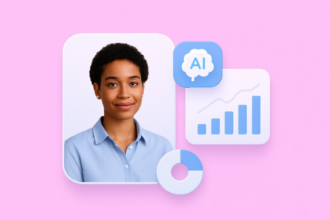Automated customer service hell.
Going through endless loops and ending up in voice-jail, eventually forced to hang up.
Being told “your call is very important to us” and that we’re only number 58 in the queue.
- Emailing a problem
- receiving a ticket number
- never hearing back.
Being redirected to a knowledge center that categorically doesn’t contain the answer to our question: Was this helpful? No? Well, there’s nothing you can do about it.
When it comes to customer support, finding an actual, real-life human to talk can feel like mission impossible.
Over the past decade, customer support staff have been slowly stripped of their personalities, autonomy and creative problem-solving skills for the sake of optimization.
There is a paradoxical effect at work: in order to guarantee so-called good standards of service, firms impose increasingly stringent and detailed rule books on customer service staff.
This makes the interactions more predictable, but less rewarding for the customer and the staff.
Successful customer service interactions rely on intuition, empathy, the right words uttered at the appropriate moment — elements only an unscripted human being can provide.
Who wants to deal with a robot when a human could do a better job?
The role of technology
But there is something else going on in the background. Today’s hyper-connected customer is calling the shots.
She is becoming smarter and better-informed every day, demanding more transparency and personalization in her interactions with businesses.
Think back to your last customer service experience. Does it bring back memories of a genuine conversation, the straightforward solving of a problem?
Or was it frustrating, stressful, overly-complex? I’m going to take a wild guess and say the latter.
Customers don’t want a clinical digital experience. They want a better customer experience.
And a better customer experience requires your customer support to be personalized, always on and real-time, consistent and omni-channel.
Which is, of course, is only possible with the help of technology.
So rather than replace human contact, customer support software should be used to make interactions more human and facilitate mass-personalization.
Try Customer Support AI Agents
Explore pre-built Customer Service & Support AI Agents to streamline your support process effortlessly.
How?
Let’s talk about software
Trying to nail and scale customer success without software is like trying to put together an Ikea bed without all the pieces. It might stand shakily upright for a while, but at some point, it’s going to collapse in the middle of the night.
You can have eons of data at your fingertips, but it’s useless without the tools to spark actionable insights.
So unless your customer service team = the grand sum of one staff member + one email account (and trust me, I’ve been there), you’re going to need some support software.
But, you guessed it, there are about a billion options vying for your business. And they all claim to be the best.
There’s a lot to consider before taking the leap.
So, how to judge software options?
Start by evaluating the needs of your business and your customer.
Talk to members of your team across the ranks to see what would make their lives easier: you can even put together an evaluation panel of junior and senior members of staff to give you the most coherent overview.
Then it’s time to knuckle down with a red bull and do some market research; read reviews, ask around your network, colleagues, friends for some personal recommendations and pull together a shortlist.
You can knock a few candidates off the list just by browsing their website and looking at demos, without having to sign up.
Consider things like customer experience, integrations, onboarding assistance, user interface, platform stability and general sentiments of the company within your industry.
Once you’ve narrowed it down to two or three — sign up. Any SaaS company that backs itself will offer a free trial (big red flag if it doesn’t).
Then you can play around with it, ask your staff members to test it out and choose a winner. Simple (ish).
Now, let’s take a look at the various options out there:
Help customers help themselves with help desk software
Help desk software is the digital meeting place of all your customer grievances. Basically, it centralizes issues so you can solve them all a) in one place and b) much more efficiently.
It streamlines your customer support team’s workflow, organizes tickets, triggers data-driven insights, develops a knowledge base and automates any annoying manual processes — and that’s just the bare-bone basics.
It’s your new best friend.
Help desk software can be as simple or as complex as your company needs.
Entry level: Reamaze, Tidio, Help Scout, Groove, Buffer Reply
Intermediate: Enchant, Deskero, Desk
Advanced: LiveAgent, Freshdesk, Kayako, Zendesk
Personalize relationships with CRM
Customer Relationship Management (CRM) is a tool that allows businesses to manage customer relationships and associated data.
It consolidates customer data in such as contact information, call log, leads and sales opportunities so you don’t have to.
By storing it in the cloud, all of this information is easily accessible to everyone in real-time.
There are tons of benefits, but the overarching plus is that it allows mass personalization (since it lets everyone know everything about everyone — i.e., your customers).
Most feature powerful integrations and application programming interfaces. As a business grows, a CRM system can expand to include more sophisticated features.
Here are some of the best-in-class for:
Contacts: Google Contacts, Highrise, Clevertim, Insightly, Capsule, Solve and Nimble
Conversations: Nutshell, Streak, and Close.io
Leads: HubSpot CRM, ClinchPad, Pipedrive, Zoho CRM, Base, Pipeliner, SugarCRM, and Salesforce
All-rounders: Podio, Odoo, and TrackVia
Pro Tip
Use Jotform Gmail Agent to draft thoughtful, on-brand replies based on your real tone, policies, and past emails. Skip the robotic workflows — and spend more time building real connections with customers.
Get chatty with customer messaging software
As I outlined in a previous story, conversational marketing is on the rise — Big time.
64% of consumers expect businesses to be able to interact with them in real time, and 44% consider having a live chat the most important feature when shopping online.
You can set up a live chat in minutes using a tool like Intercom or Drift, or set up a bot on a pre-existing platform such as Facebook Messenger, Slack, Discord or Telegram.
Integrate, integrate, integrate
If you’re serious about your data, you might want to consider bringing in Customer Success Management software (CSM) for the ultimate overview.
CSM is a relatively recent development within the SaaS industry. It’s intended to help companies improve retention rate by giving a cohesive overview into every nook and cranny of their customer data. It allows you to:
- track customer usage and adoption, which in turn lets you identify who’s about to churn before they do;
- set up alerts or personalized responses; seek out customers that need a little extra TLC;
- optimize the customer lifecycle and discover customer advocates.
Gainsight, Totango, ClientSuccess and Natero are the names to look out for.
For the less data-obsessed amongst us (like myself), there’s also Zapier, a service that allows you to create automated workflows between multiple apps. It’s super-simple and the perfect tool to pull everything together with.
Build trust with the right support channels
Fuelled by the desire of providing amazing customer support, it can be tempting to over-promise and say “we’ll be available on every channel, every day, all the time.”
But with the limited resources of a startup, it’s often impossible to make this support consistent. That’s why it’s better to nail support over a couple of channels than to attempt to tackle them all, do an average job and eventually have to close some of them down.
The role of AI in customer success
Way back in 2011, Gartner predicted that by 2020, 85% of customer relationships would be managed without human intervention. That’s not quite the reality — but it’s not far off.
AI is giving machines the ability to interact with humans on a level that was previously only imaginable in sci-fi movies, powering every interaction we have and raising customer expectations to a whole new level.
Today, 38% of companies use AI and machine learning, and it’s predicted to reach 62% by the end of this year.
But technology is only part of the puzzle; the magic happens when the customer success agent and the software combine come together in perfect harmony.
When software succeeds in solving common, simple problems, it gives us room to commit to unusual, complex problems that require empathy, a deep understanding of nuanced situations, and intuition — all traits that humans possess and machines don’t.
We need to use technology to strengthen the human touch; not to overpower it.








































Send Comment:
1 Comments:
More than a year ago
Aytekin, thank you for a great article! Very useful insights for delivering outstanding customer support .